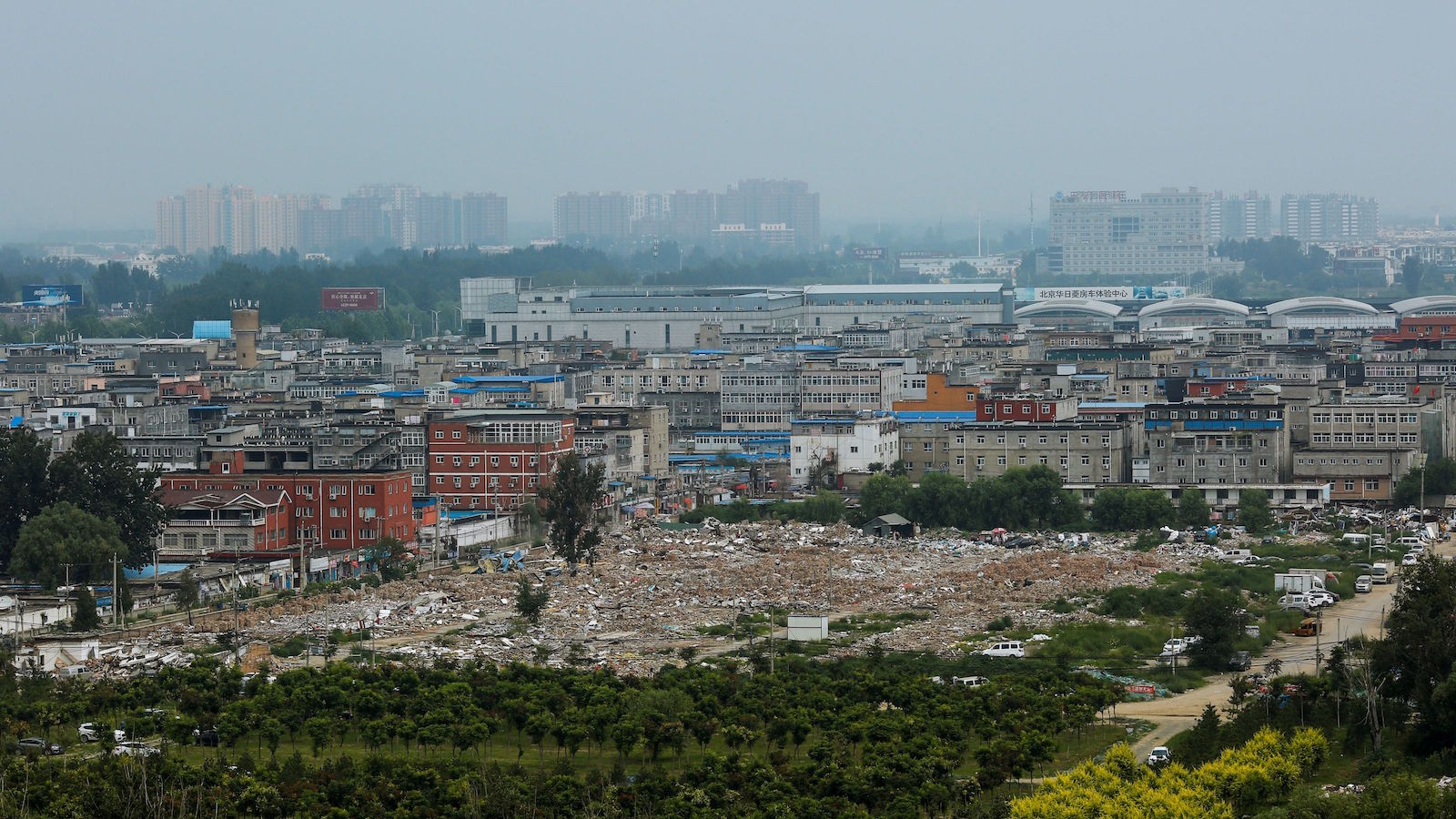by Brian Hioe
語言:
English
Photo Credit: Pixy/Public Domain
GAS, WATER, and electricity were cut off to villagers in Xiangtang Village (香堂) in Beijing late last month by authorities, as part of an attempt to evict residents of the village, which is slated for demolition. This occurs despite sub-zero temperatures in Beijing, with residents having resisted attempts by authorities to evict them for weeks, engaging in protests and hunger strikes, among other actions.
The village was blockaded earlier in December, with houses forcibly demolished using construction equipment. Gas, water, and electricity were cut off to households that resisted eviction. This has led some residents to burn coal in their buildings to keep warm, despite the risk of poisoning themselves. Apart from that residents have faced forcible attempts at removal from police, residents also report having been threatened by thugs, who seem to be working with development companies. Yang Yusheng, a local resident that previously engaged in a hunger strike against the evictions and a professor at China University of Political Science and Law, has stated that in the course of the eviction, he was followed by unknown individuals.
 The Beijing National Stadium constructed for the Beijing Olympics. Photo credit: Peter23/WikiCommons/CC
The Beijing National Stadium constructed for the Beijing Olympics. Photo credit: Peter23/WikiCommons/CC
There are over 3,800 buildings in Xiangtang Village, inhabited by tens of thousands of residents. The attempt by authorities to demolish Xiangtang Village is somewhat unusual, seeing as the village was previously touted as a model village during the 2008 Beijing Olympics. After being named Beijing’s most beautiful village in 2007, authorities sought to promote tourism to Xiangtang Village during the Beijing Olympics.
Xiangtang was originally a small farming village, which developed after local farmers began to invest in developing the area for real estate. As a result, in the course of the 1990s and 2000s, a number of middle-class residents moved into the village, as did a number of cultural figures and members of the “red second generation”—individuals descended from prominent members of the Chinese Communist Party (CCP). This has not prevented members of the “red second generation” or well-known cultural figures such as painter Fan Zeng from having their homes demolished or being taken into custody, however.
Residents of the Xiangtang Village were notified last year that their homes were illegally constructed and that they would need to vacate their homes within three days. Claims that residences were illegally constructed, a common claim used to justify housing evictions in China. Xiangtang Village residents responded by protesting the local authorities last October, leading plans for evictions to be suspended.
Authorities notified homeowners that they had seven days to vacate their homes earlier this month, prompting the current spate of protests in Xiangtang Village. As with last year, Xiangtang Village residents have sought to provide documentation showing that they legally purchased their homes, but this has been disregarded by authorities.
It is somewhat unclear as to why the Beijing city government has decided to take such a strong stance regarding the eviction. Some believe that Cai Qi, the current party secretary of Beijing, is aiming to impress higher-ups within the CCP through firm action.
 Photo credit: Geoff McKim/WikiCommons/CC
Photo credit: Geoff McKim/WikiCommons/CC
The Xiangtang Village demolition saga adds another sordid chapter to the recent history of forced evictions in China. After the death of nineteen migrant workers in a fire in the Daxing District of Beijing in November 2017, the Beijing city government sought to use this as a pretext for large-scale eviction of migrant workers from Beijing. Although the total number of migrant workers evicted is unknown, the number was in the tens, if not hundreds of thousands, with some migrant workers only given fifteen minutes to clear out their homes.
In past years, Beijing has also seen large swaths of the city demolished to make way for development. This was the fate of many of Beijing’s historic hutongs and large tracts of the Sanlitun bar district in 2017 onward, among other prominent city districts. The Chinese government intends to drastically redevelop Beijing in coming years, with a population limit of 23 imposed for the city.
What provoked particular outrage regarding migrant worker evictions in 2017 was that migrant workers were referred to as an unwanted, “low-end population” by authorities. While many residents of Xiangtang Village are thought to be middle-class, the forced demolition proves that hardly anyone is safe from the sudden threat of eviction for the sake of commercial development in contemporary China—and, either way, residents of Xiangtang Village will be left without homes to return to once evicted.

